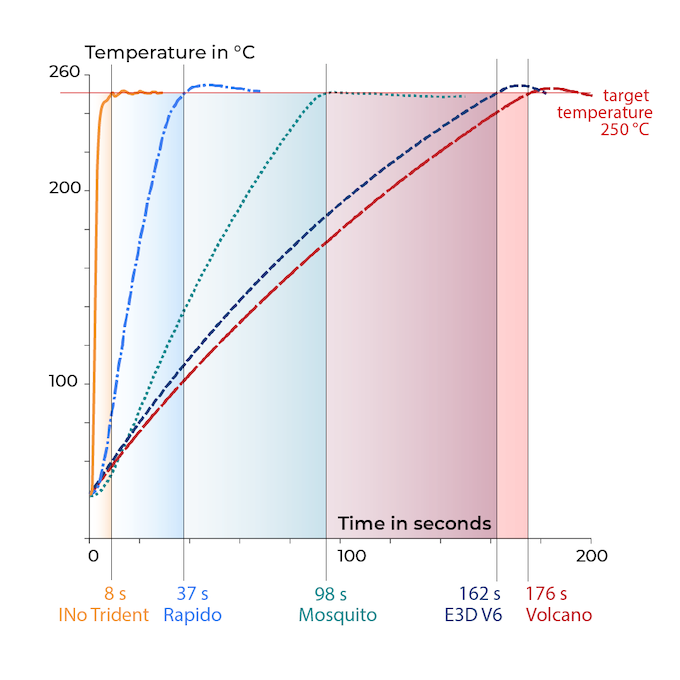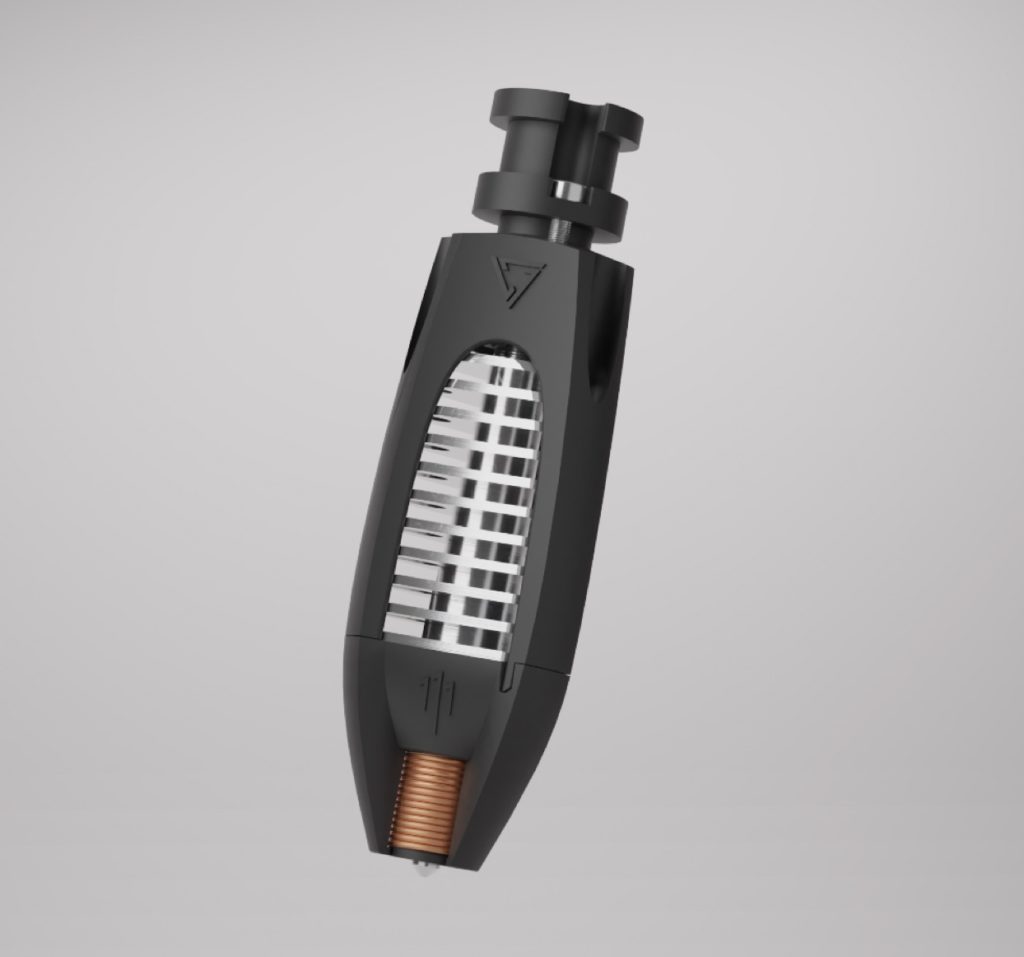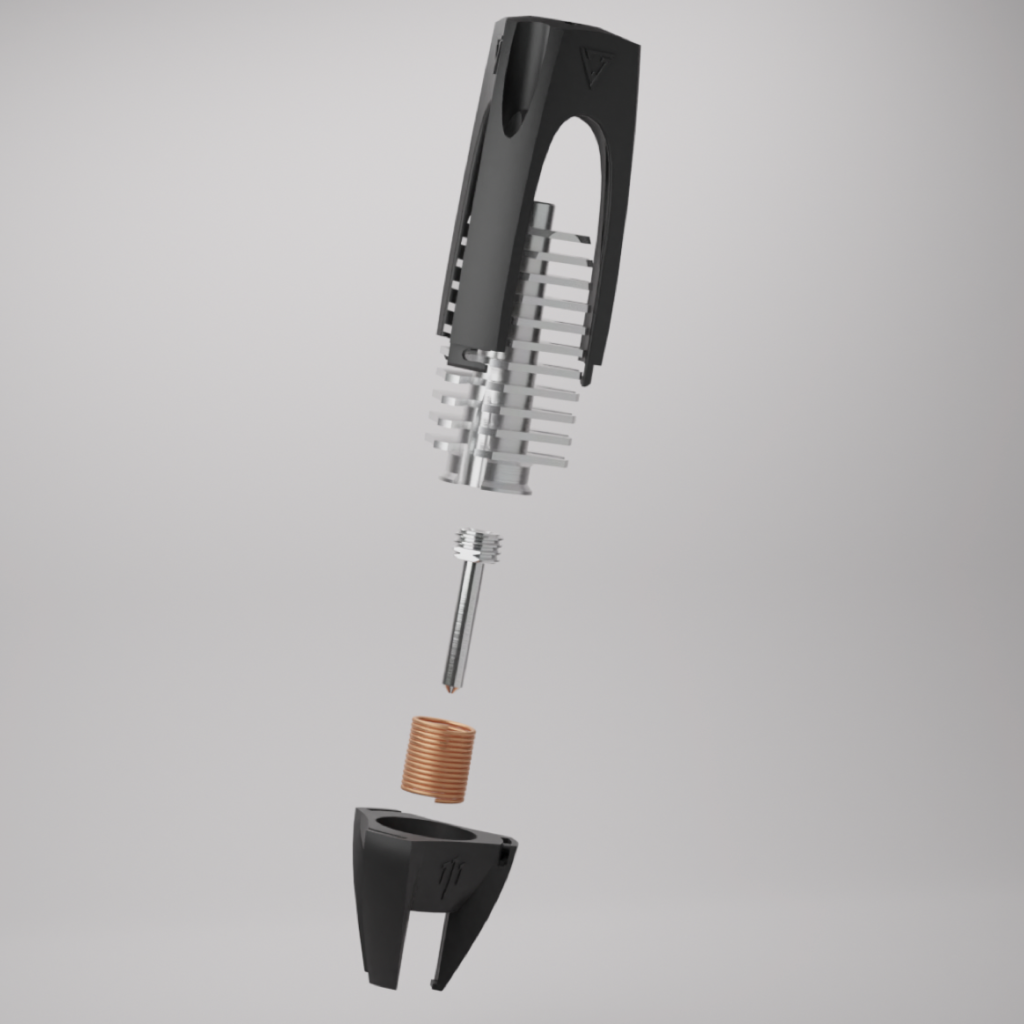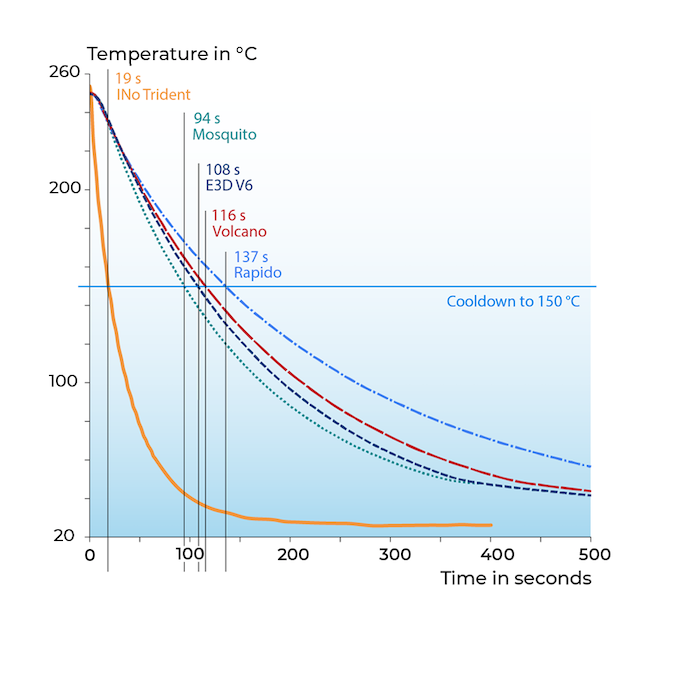After wowing me last year at Formnext with its nozzle technology, Vienna-based startup Plasmics has launched a Kickstarter for its INo Trident induction-heat nozzle for extrusion 3D printing. The same technology that is in many stovetops, induction heating works by electrically transferring heat through conductive materials.Induction nozzles can be found on many-a lab table and in the dreams of additive manufacturing (AM) users. Now, Plasmics claims that it will be the first to introduce such an induction extrusion nozzle commercially, with a goal of shipping in March of next year.
“Along with the nozzle, the hotend is the part of the 3D printer which has the highest impact on printing quality. Conventional resist-heated nozzles often do not maintain a constant temperature during extrusion because of the slow heat transfer. This, in turn, leads to speed limitations and oozing. That’s why we developed the Plasmics INo Trident – to be able to solve all these issues,” says Konrad Schreiner, CEO of Plasmics.
The Precision of Induction
The company says that other hot ends took 37 seconds to get to 250°C, while the INo Trident took just eight seconds. Conversely, the INo Trident was 75 seconds faster than other hot ends to drop to 150°C. The company notes that this could be especially valuable when printing varioShore TPU from colorFabb. Below, we can see heat up times of some nozzles compared.
Below we can see the temperature cooldown when compared to other nozzles. This could offer a decided advantage.
Cost vs Value
The nozzle is costly, coming in at €319 for the Kickstarter version, which will later be retailed for €479. You can also opt for the €419 INo Trident Carbon Black Edition.
Now, many users will probably be comparing the price of the Plasmics nozzle with the cost of their printer. I’m not going to say that the INo Trident is not pricey. The good news is that it is a drop in replacement for existing nozzles. The company has made the nozzle abrasion resistant, which could prolong its life and allow for more exotic materials. It can also withstand temperatures for ULTEM and other high-temperature filaments. For now, it only has Klipper support with Marlin and Duet support via SPI interface to be added before the product is shipped. Klipper, is growing, but that could limit the appeal for now.
Plasmics is more ambitious still. Later on, the company hopes to roll out the Plasmics Ecosystem bit by bit , which will include better Gcode generation. The firm is behind the scenes working with some top orthoses and medical device firms to deploy its technology in manufacturing.
Induction nozzles have been a topic of research for over a decade. At one point, all extrusion printer manufacturers could allow for induction nozzles to instantaneously and dynamically heat and cool according to wall slip and other pressure effects in the nozzle. Systems could also even heat and cool quickly to specific geometries within a print. I hope that Plasmics takes us all into an induction age, where we can digitally measure and control our heat.
Subscribe to Our Email Newsletter
Stay up-to-date on all the latest news from the 3D printing industry and receive information and offers from third party vendors.
You May Also Like
3D Printing Financials: Fathom Struggles in Financial Quicksand During Critical Transition
Facing a year of key transitions and financial pressures, Fathom (Nasdaq: FTHM) has filed its annual report for 2023 with the U.S. Securities and Exchange Commission (SEC). The document outlines...
Latest Earnings Overview for Australian 3D Printing Firms Titomic and AML3D
Australian 3D printing manufacturing firms Titomic (ASX: TTT) and AML3D (ASX: AL3) reported their financial results for the period from July to December 2023, marking the first half of their...
3D Printing Webinar and Event Roundup: April 7, 2024
Webinars and events in the 3D printing industry are picking back up this week! Sea-Air-Space is coming to Maryland, and SAE International is sponsoring a 3D Systems webinar about 3D...
3D Printing Financials: Unpacking Farsoon and BLT’s 2023 Performance
In the Chinese 3D printing industry, two companies, Farsoon (SHA: 688433) and Bright Laser Technologies, or BLT (SHA: 688333), have recently unveiled their full-year earnings for 2023. Farsoon reported increases...



































